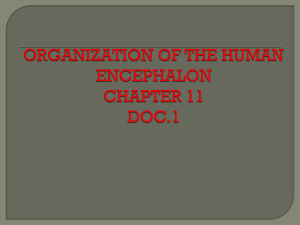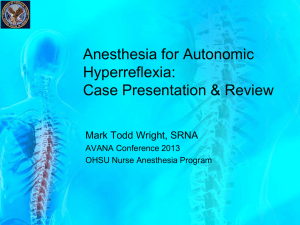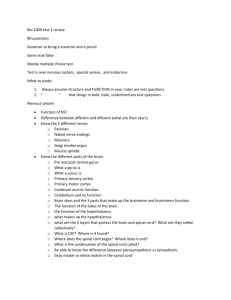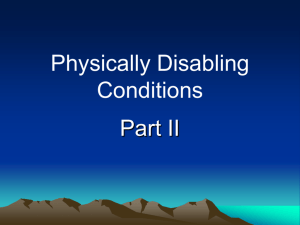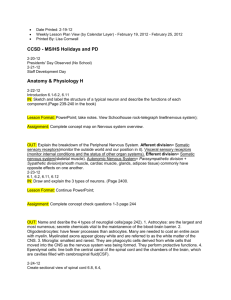Autonomic Hyper Reflexia
advertisement
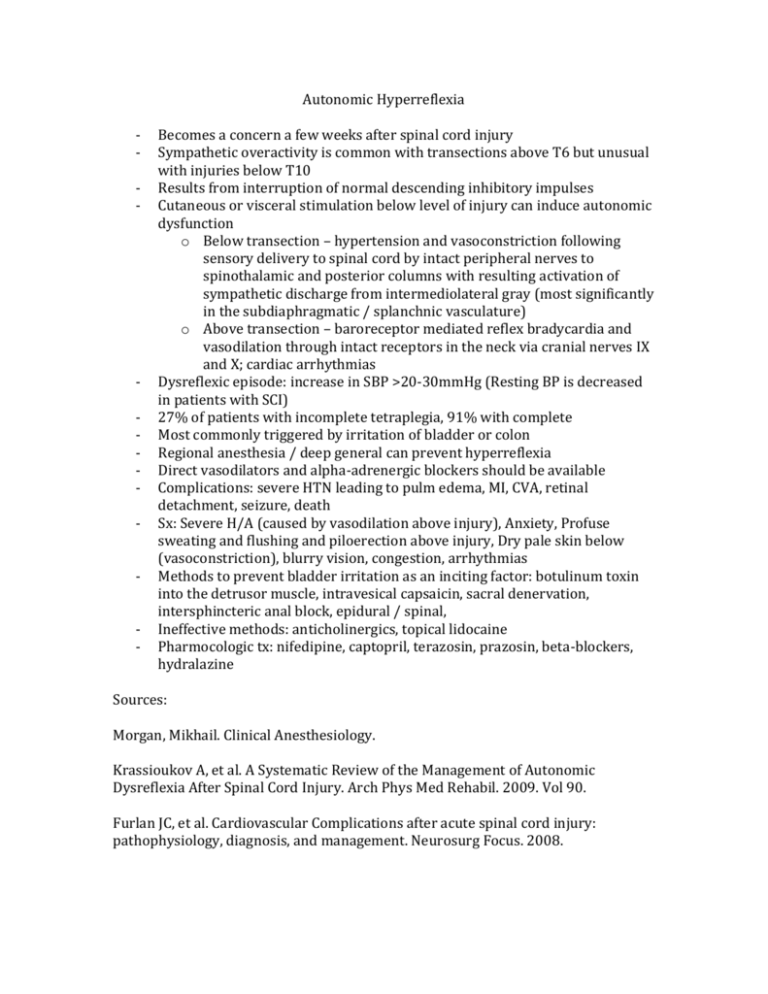
Autonomic Hyperreflexia - - Becomes a concern a few weeks after spinal cord injury Sympathetic overactivity is common with transections above T6 but unusual with injuries below T10 Results from interruption of normal descending inhibitory impulses Cutaneous or visceral stimulation below level of injury can induce autonomic dysfunction o Below transection – hypertension and vasoconstriction following sensory delivery to spinal cord by intact peripheral nerves to spinothalamic and posterior columns with resulting activation of sympathetic discharge from intermediolateral gray (most significantly in the subdiaphragmatic / splanchnic vasculature) o Above transection – baroreceptor mediated reflex bradycardia and vasodilation through intact receptors in the neck via cranial nerves IX and X; cardiac arrhythmias Dysreflexic episode: increase in SBP >20-30mmHg (Resting BP is decreased in patients with SCI) 27% of patients with incomplete tetraplegia, 91% with complete Most commonly triggered by irritation of bladder or colon Regional anesthesia / deep general can prevent hyperreflexia Direct vasodilators and alpha-adrenergic blockers should be available Complications: severe HTN leading to pulm edema, MI, CVA, retinal detachment, seizure, death Sx: Severe H/A (caused by vasodilation above injury), Anxiety, Profuse sweating and flushing and piloerection above injury, Dry pale skin below (vasoconstriction), blurry vision, congestion, arrhythmias Methods to prevent bladder irritation as an inciting factor: botulinum toxin into the detrusor muscle, intravesical capsaicin, sacral denervation, intersphincteric anal block, epidural / spinal, Ineffective methods: anticholinergics, topical lidocaine Pharmocologic tx: nifedipine, captopril, terazosin, prazosin, beta-blockers, hydralazine Sources: Morgan, Mikhail. Clinical Anesthesiology. Krassioukov A, et al. A Systematic Review of the Management of Autonomic Dysreflexia After Spinal Cord Injury. Arch Phys Med Rehabil. 2009. Vol 90. Furlan JC, et al. Cardiovascular Complications after acute spinal cord injury: pathophysiology, diagnosis, and management. Neurosurg Focus. 2008.



